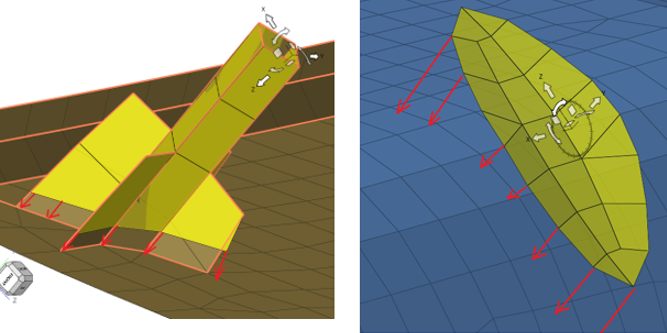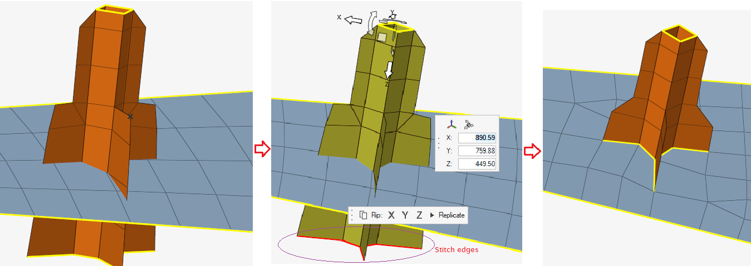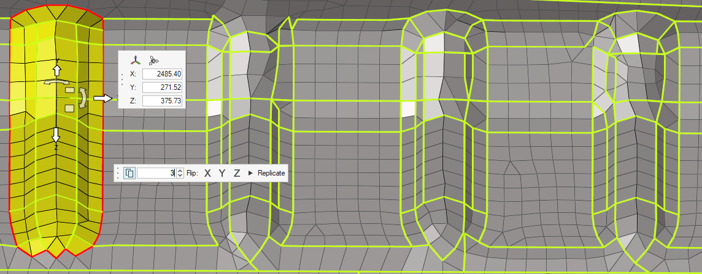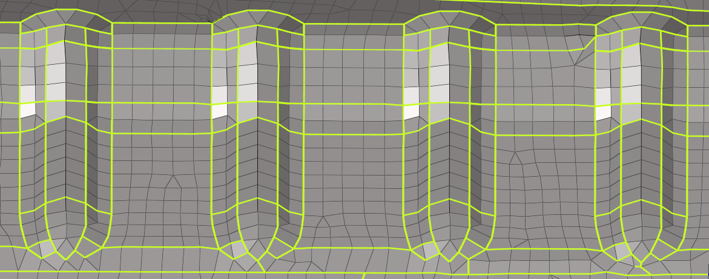Replicate Mesh
Use the Replicate tool to replicate a mesh from one location to another, with options to keep the original mesh, as well as to replicate into multiple copies. The replicated elements replace the original elements, maintaining relevant information like properties, thicknesses, and other solver attributes.
This is useful when there are multiple instances of the same feature in a model. You may clean and prepare the mesh for just one of the instances, and then replicate those changes to the other locations. This is also useful for making design changes, such as moving a feature from one location to another or creating multiple instances of a feature.
-
From the 2D ribbon, click the
Replicate tool.
Figure 1. 
- Optional:
On the guide bar, click
 to change mapping and
rebuilding options.
to change mapping and
rebuilding options.
-
Select elements to replicate.
Restriction: Selecting 1D elements is not possible without including 2D/3D elements.
- Click the Stitch Edges selector then select 1D elements or mesh edges across which the elements will be extended or trimmed.
- Click Move on the guide bar.
- Optional:
In the microdialog, toggle the Keep
original button.
- When on, the original elements are kept. Use the text box to select the number of instances of the feature to replicate. This is supported both for mesh associated to geometry as well as mesh not associated to geometry.
- When off, the original elements are removed, and the area is filled in with a patch. This is supported only for mesh not associated to geometry.
-
Position the replicate instance(s) using the Move tool
manipulators.
Tip: Quickly reflect about the X, Y, or Z axis using the icons in the microdialog.
- Click Replicate on the guide bar or the microdialog.
Mapping Methods
Choose a mapping method by clicking ![]() on the
Replicate tool guide bar.
on the
Replicate tool guide bar.
- Auto
- Smarty decide what to do based on the selected feature. This method utilizes imprint, morph, and rebuild functionalities internally.
- Extend
- This function comes in handy when extending or trimming the feature to
the base mesh. Refer to the example images below from left to right for
an illustration of the usage.Note: In this case, the copy option is turned off in order to trim the base mesh with the feature and create conformal feature edges on the base (as shown in the right most image).
- Morph
- This option is best suited when there is a slight mismatch in the size and shape of the source and base feature; both features are morphed in order to create conformality.
- None
- If you would like to maintain the source topology unchanged, it is recommended to use this mapping method. In the following example, the left bead has been used as a source topology.



